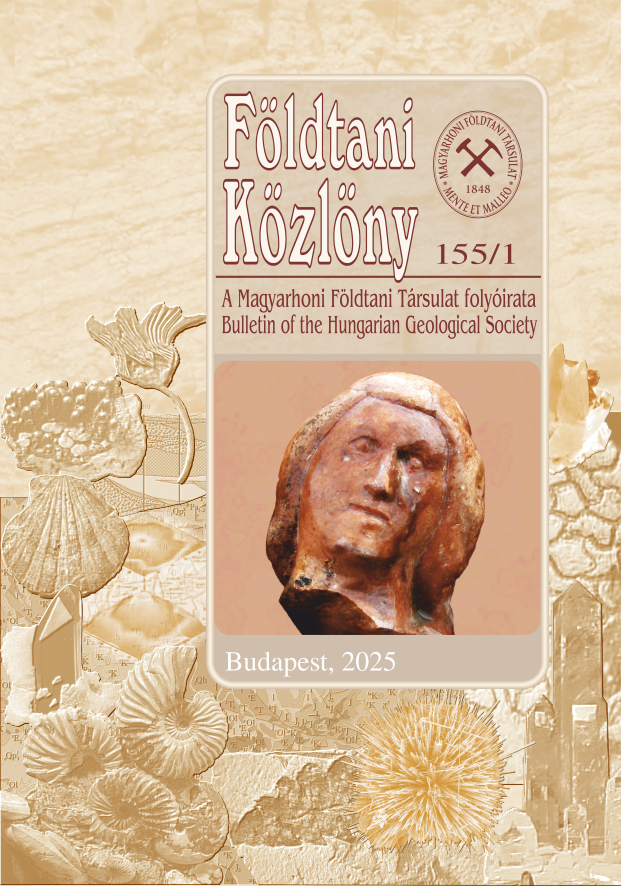Hazai pleisztocén–holocén üledékek és talajok radioaktívelem-tartalmának jellemzői
Absztrakt
A hazai negyedidőszaki képződmények radioaktívelem-tartalma elsősorban a laboratóriumi gamma-spektrometriai mérések eredményei alapján került kiértékelésre. Ezek a mérések egyrészt az üledékek lumineszcens kormeghatározásához készültek, másrészt a recens talajok felmérésére irányultak az Országos Radiometriai Alaphálózat keretében. A kiértékelés lösz kutatási területen mélyült fúrások természetes gamma szelvényeinek elemzésével is kiegészült.
A rendelkezésre álló adatok alapján megállapítható, hogy a finomabb szemcseméretű üledékek (lösz, ill. kőzetliszt) nagyobb U-, Th- és K-koncentrációval rendelkeznek, mint a durvább szemcseméretűek (homok). Ez a már ismert tendencia elsősorban a finomszemű üledékek nagyobb agyagásvány-tartalmával állhat összefüggésben. A löszszelvények paleotalajaiban nagyobb a radioaktívelem-tartalom, mint a löszökben, amit a talajosodási folyamatok eredményezhettek,
különösen az agyagásványok és a vas-oxid-hidroxidok keletkezése, valamint a szerves anyagok bekerülése, mivel mindezek adszorbeálják a vizsgált radioaktív elemeket. A különböző területekről vizsgált löszökben és recens talajokban
a radioaktív elemek koncentrációja tükrözi a helyi kőzettani sajátosságokat, ill. a talajképző kőzeteket. Az egyes talajtípusok jellemző U-, Th- és K-tartalmának alakulásában az eltérő talajosodási folyamatok, a paleotalajok esetében
pedig a betemetődés utáni diagenetikus folyamatok is fontos szerepet játszottak. A löszszelvények korrelációjában a lumineszcens kormeghatározáshoz készült szórványos radiometriai adatok nem bizonyultak megfelelőnek, a fúrások
természetes gamma szelvényei viszont jól alkalmazhatók korrelációs célokra, mivel a szomszédos fúrások egyidős löszés paleotalaj-szintjeiben nagyon hasonló a GR-görbék lefutása.













